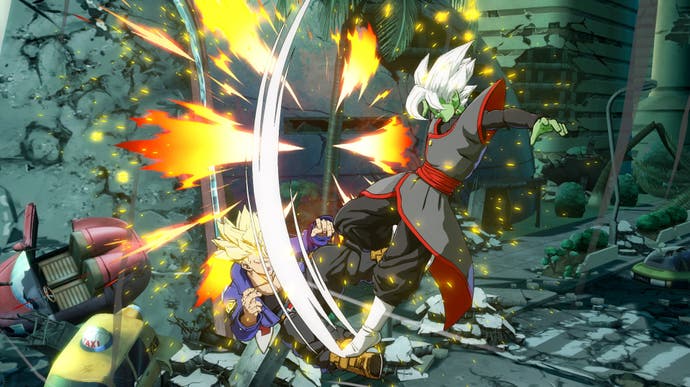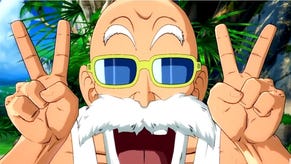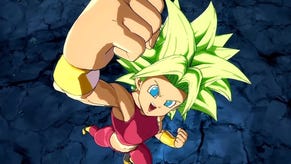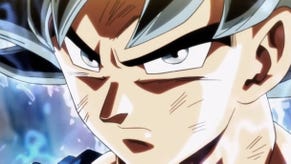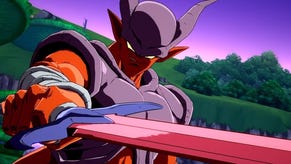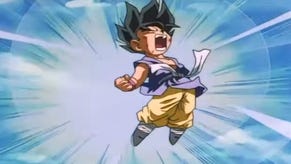Dragon Ball FighterZ developers talk fan service, bad characters and the touch of death
Just saiyan.
Dragon Ball FighterZ is six months old and it's still going strong. Arc System Works' superb fighting game launched with a bang and has sold an impressive 2.5m copies - a great haul for a fighting game. While interest has understandably calmed, fighting game fans have stuck with the game, and it's set to star at Evo - the world's biggest fighting game tournament - with the highest number of entrants, more even than headline act Street Fighter 5. No matter which way you look at it, Dragon Ball FighterZ has been an enormous success for publisher Bandai Namco.
My Dragon Ball FighterZ review runs through why I think the game is great. It nails the Dragon Ball anime, does a great job of appealing to fighting game newcomers and veterans, and is just a lot of fun to play.
But I thought it a good time to have a chat with Tomoko Hiroki, the producer of the game from Bandai Namco, and Junya Motomura, director of the game at Arc System Works, to dig a little deeper into the design of the game, see if anything players are doing with it has come as a surprise, and get some insight into FighterZ's incredible fan service.
You've sold 2.5m copies, which sounds fantastic to me for a fighting game. Did that surprise you? Has it met your expectations?
Hiroki: To be completely honest, it was a great surprise for us that we were able to achieve 2.5m units for this title, especially because this game was a completely new franchise. But, our main objective for this title was not to achieve a certain amount of units, it was to work with Arc System Works to create a genuine fighting game based on Dragon Ball.
In terms of the units, since Dragon Ball Xenoverse 2 - a different Dragon Ball title we previously released - the series is about to reach 8m. We hope we can continue selling Dragon Ball FighterZ even more.
What would you say is the chief reason for the game's success so far? Obviously it's got the Dragon Ball licence so it appeals to Dragon Ball fans, but it seems to have broken out beyond that as well.
Hiroki: We believe the main reason for the success is the first announcement, and also the support we have post-launch. For the first announcement, if you remember, we made it at the Microsoft media briefing. At that point we were able to deliver to users quite a surprising animated expression, as well as a genuine fighting game mechanic. We believe the fusion of these two was quite impactful for the users.
Another thing is, thanks to the help of Arc System Works, even after the release of the game we've been able to constantly listen to the voices from fans, hear their feedback and implement that into the game. We believe these two points are the main pillars of our success.
For Arc System Works, what was the biggest challenge you faced during development?
Motomura: The greatest challenge was to get the graphics right, so the graphics were attractive but at the same time visually readable, so it could complement the fighting game mechanics through player registration.
One of the great things about the game is it stays true to the anime. I think it looks better than the anime! But how did you achieve the look? What process did the developers go through to make it happen?
Motomura: The foundation was already built with the Guilty Gear franchise, so we had an idea of how to achieve the anime style look prior to the project. Customising that to match the visual style Dragon Ball has was a challenge for us. Getting the character models right and then animating them in the right way was also a big challenge. But most of all, it was done through very talented animators and modellers that put quite a lot of time into making each character.
The game has so much fan service. Everything about it suggests you understood what fans love about Dragon Ball. I assume you have a lot of Dragon Ball fans on the team, but did you have to draft in any experts or do extensive research?
Motomura: Everyone knows Dragon Ball, and a lot of us are fans of Dragon Ball, so we had a lot of people who were well informed about Dragon Ball, who knew the basic aspects of it. The story mode wasn't a re-telling of the original story. We had the concept that we would reference the original story within the fighting game itself - not as a story but through cutscenes and small references within the fighting game.
Are you talking about some of the dramatic finishes?
Motomura: Yes, but also small things like Frieza's turning discs that can hit him. Those are also things we took from the original content.
FighterZ manages to appeal to newcomers to fighting games as well as fighting game fans, which a lot of fighting games struggle with. How did you approach maintaining that balance?
Hiroki: The whole concept was to reach out to the Dragon Ball fans as well, although it is a fighting game. So, we believed that in order to reach this casual fanbase, we needed to make the controls not too difficult. The fact we were able to implement a 3v3 system was one thing that helped bring in the casual users, especially because we understand Dragon Ball fans wanted to use different types of characters.
We thought that, rather than make the controls more and more difficult, we wanted to focus more on mind games, making each of the characters quite different. Another thing I realised only after the game was released is that when this game is being played for esports, the fact we were able to use easier to understand words for the specific mechanics we have for the game - so, for example, the Z Change, the Super Dash - this wasn't our main objective, but the fact we were able to use rather easy to understand words was something that worked to lower the hurdles for the casual fans.
Motomura: We started out with a clear goal that we had to satisfy both the casual players and the competitive players. We had that idea from the start. Since this was a new franchise, we were able to build from the ground up without pulling anything from a series fighting game. So we were able to build from the ground up to balance the system without having to think about how we were going to satisfy the old players. That was a good positive we were working to.
Arc System Works has recently been very conscious about this problem, of the divided userbase. We were constantly trying to find a way to satisfy both of the user types. It was a result of a very long term consideration of how to achieve this playstyle.

In terms of the mechanics, what's most important in helping the game achieve this balance?
Motomura: One of the biggest aspects was having more freedom in the camera angles. Unlike conservative fighting games, we utilise the camera angle shift a lot in the game. That is to make a more visually appealing game. It also complements the clarity of the game to show the player what is happening from moment to moment. So, with the easy controls and the strong visual appeal, those two were the key elements in attracting the interest of more casual players.
Because it's just the controls and the visuals, that doesn't get in the way of high level playing. It doesn't ruin the competitive playing, while it complements the casual players with the easy controls and more flashy visuals.
The game has been out a while now. Has anything players have achieved with the game surprised you?
Motomura: One thing that surprised us was how creative players were in making teams, in finding characters that cooperate with each other and have a stronger team resonance. And also, having the high level play and the competitive nature within the esports area was also very surprising. Having our favourite players consistently playing this game and having a high view rating was also very surprising. It made us happy!
You mentioned there are some character combinations that surprised you. Which ones, specifically?
Motomura: One example we can say is, certain high level players using Gotenks and his assist move in a very creative way, and finding out characters who compliment him.
I love the touch of death combos players have discovered - even without assists. What do you think about this? Did you design the game with these in mind?
Motomura: We didn't want to limit the players' freedom to discover new actions. We didn't really want to put them in a box. We wanted players to have a lot of areas where they can discover by themselves. We didn't want to make it super limited.
Have players taken the combo system as far as it can go, now the game has been out a while? Or is there more to discover players haven't found yet?
Motomura: There are a lot of characters that are underutilised, and those characters have a lot of potential. Even the more popular characters, in combination with those underutilised characters - players may find new tactics and combos to have more fun.
As the developer you'll be tracking the data for the game and how it's being played. What are the most underused characters at the moment? And what are the most popular characters?
Hiroki: Currently Frieza is one of the not so popular characters that can be utilised more.
Motomura: And Krillin!
Hiroki: Some of the top tier players are using Krillin very effectively. But the number of players overall using Krillin is quite low, so we believe there are still a lot of possibilities for combinations there.

Why is Krillin so underused? What is it about the character that means he's not being used so much?
Hiroki: We believe the reason is because Krillin is leaning more towards a support character, rather than a character fighting up front. But the whole concept of this game is to be the last one standing out of the six characters who are out there. The top tier players are able to use these support skills of Krillin, but other players aren't fully able to utilise it at this point.
At the other end of the scale, Cell is considered perhaps the best characters in the game. He's certainly one of the most popular. Were you surprised Cell rose to the top?
Motomura: We never make any character designed to be the strongest. But Cell being one of the more standard characters and a very straightforward in a way character, he was very popular from the beginning and was used a lot. Being used a lot means the character's techniques and mechanics are developed quite early. That's one of the aspects that makes him one of the stronger characters at the moment. We believe other characters can also get to his level if they have enough development.
What's the plan for future balance updates? Do you consider the game to be well-balanced at the moment, or are there areas of the game you'd like to target?
Hiroki: We believe the more players who join the fight, the more the way players fight will change as we go along. At this point in time, we believe we have a good balance. But, obviously this will change as the way players fight changes. There are a lot of under utilised characters, so as the techniques of these characters continue to develop, we need to continuously balance the game.
You're working through season pass one of DLC characters. Does the impressive success of the game mean you're thinking about longer term support, perhaps with new characters past season one?
Hiroki: At this point in time we don't have anything detailed set in stone. But we want to continue supporting the game for a long period of time.
